Jiaxin Yang
RadHop-Net: A Lightweight Radiomics-to-Error Regression for False Positive Reduction In MRI Prostate Cancer Detection
Jan 03, 2025



Abstract:Clinically significant prostate cancer (csPCa) is a leading cause of cancer death in men, yet it has a high survival rate if diagnosed early. Bi-parametric MRI (bpMRI) reading has become a prominent screening test for csPCa. However, this process has a high false positive (FP) rate, incurring higher diagnostic costs and patient discomfort. This paper introduces RadHop-Net, a novel and lightweight CNN for FP reduction. The pipeline consists of two stages: Stage 1 employs data driven radiomics to extract candidate ROIs. In contrast, Stage 2 expands the receptive field about each ROI using RadHop-Net to compensate for the predicted error from Stage 1. Moreover, a novel loss function for regression problems is introduced to balance the influence between FPs and true positives (TPs). RadHop-Net is trained in a radiomics-to-error manner, thus decoupling from the common voxel-to-label approach. The proposed Stage 2 improves the average precision (AP) in lesion detection from 0.407 to 0.468 in the publicly available pi-cai dataset, also maintaining a significantly smaller model size than the state-of-the-art.
LLMs in Biomedicine: A study on clinical Named Entity Recognition
Apr 10, 2024



Abstract:Large Language Models (LLMs) demonstrate remarkable versatility in various NLP tasks but encounter distinct challenges in biomedicine due to medical language complexities and data scarcity. This paper investigates the application of LLMs in the medical domain by exploring strategies to enhance their performance for the Named-Entity Recognition (NER) task. Specifically, our study reveals the importance of meticulously designed prompts in biomedicine. Strategic selection of in-context examples yields a notable improvement, showcasing ~15-20\% increase in F1 score across all benchmark datasets for few-shot clinical NER. Additionally, our findings suggest that integrating external resources through prompting strategies can bridge the gap between general-purpose LLM proficiency and the specialized demands of medical NER. Leveraging a medical knowledge base, our proposed method inspired by Retrieval-Augmented Generation (RAG) can boost the F1 score of LLMs for zero-shot clinical NER. We will release the code upon publication.
PSHop: A Lightweight Feed-Forward Method for 3D Prostate Gland Segmentation
Mar 24, 2024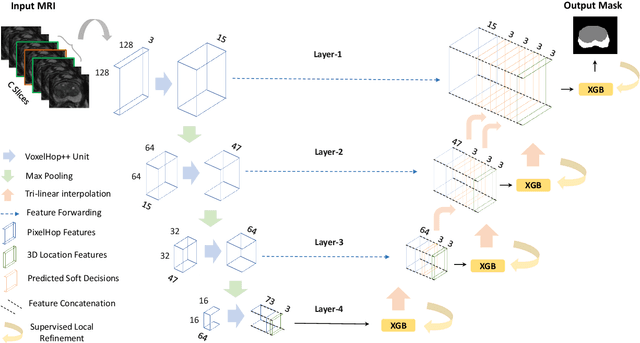
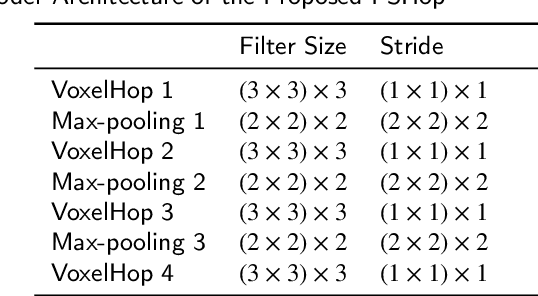
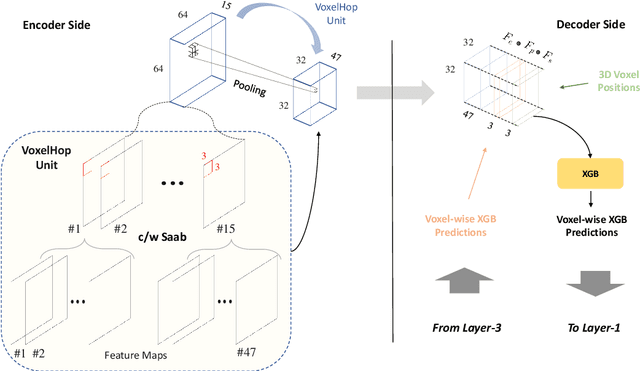

Abstract:Automatic prostate segmentation is an important step in computer-aided diagnosis of prostate cancer and treatment planning. Existing methods of prostate segmentation are based on deep learning models which have a large size and lack of transparency which is essential for physicians. In this paper, a new data-driven 3D prostate segmentation method on MRI is proposed, named PSHop. Different from deep learning based methods, the core methodology of PSHop is a feed-forward encoder-decoder system based on successive subspace learning (SSL). It consists of two modules: 1) encoder: fine to coarse unsupervised representation learning with cascaded VoxelHop units, 2) decoder: coarse to fine segmentation prediction with voxel-wise classification and local refinement. Experiments are conducted on the publicly available ISBI-2013 dataset, as well as on a larger private one. Experimental analysis shows that our proposed PSHop is effective, robust and lightweight in the tasks of prostate gland and zonal segmentation, achieving a Dice Similarity Coefficient (DSC) of 0.873 for the gland segmentation task. PSHop achieves a competitive performance comparatively to other deep learning methods, while keeping the model size and inference complexity an order of magnitude smaller.
PCa-RadHop: A Transparent and Lightweight Feed-forward Method for Clinically Significant Prostate Cancer Segmentation
Mar 24, 2024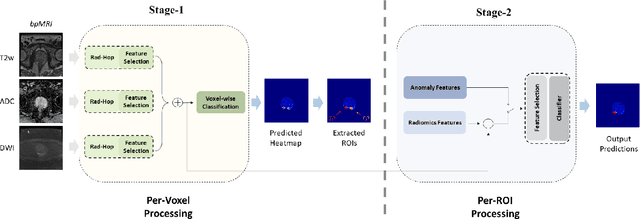


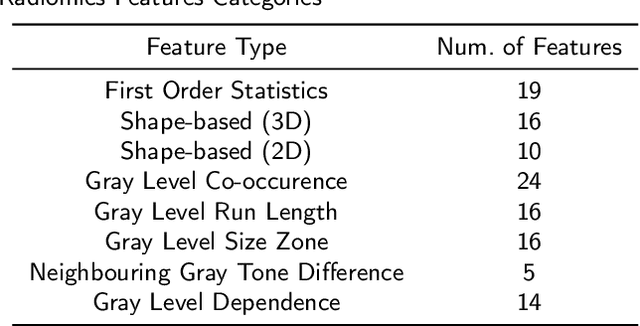
Abstract:Prostate Cancer is one of the most frequently occurring cancers in men, with a low survival rate if not early diagnosed. PI-RADS reading has a high false positive rate, thus increasing the diagnostic incurred costs and patient discomfort. Deep learning (DL) models achieve a high segmentation performance, although require a large model size and complexity. Also, DL models lack of feature interpretability and are perceived as ``black-boxes" in the medical field. PCa-RadHop pipeline is proposed in this work, aiming to provide a more transparent feature extraction process using a linear model. It adopts the recently introduced Green Learning (GL) paradigm, which offers a small model size and low complexity. PCa-RadHop consists of two stages: Stage-1 extracts data-driven radiomics features from the bi-parametric Magnetic Resonance Imaging (bp-MRI) input and predicts an initial heatmap. To reduce the false positive rate, a subsequent stage-2 is introduced to refine the predictions by including more contextual information and radiomics features from each already detected Region of Interest (ROI). Experiments on the largest publicly available dataset, PI-CAI, show a competitive performance standing of the proposed method among other deep DL models, achieving an area under the curve (AUC) of 0.807 among a cohort of 1,000 patients. Moreover, PCa-RadHop maintains orders of magnitude smaller model size and complexity.
PSVRF: Learning to restore Pitch-Shifted Voice without reference
Oct 06, 2022



Abstract:Pitch scaling algorithms have a significant impact on the security of Automatic Speaker Verification (ASV) systems. Although numerous anti-spoofing algorithms have been proposed to identify the pitch-shifted voice and even restore it to the original version, they either have poor performance or require the original voice as a reference, limiting the prospects of applications. In this paper, we propose a no-reference approach termed PSVRF$^1$ for high-quality restoration of pitch-shifted voice. Experiments on AISHELL-1 and AISHELL-3 demonstrate that PSVRF can restore the voice disguised by various pitch-scaling techniques, which obviously enhances the robustness of ASV systems to pitch-scaling attacks. Furthermore, the performance of PSVRF even surpasses that of the state-of-the-art reference-based approach.
 Add to Chrome
Add to Chrome Add to Firefox
Add to Firefox Add to Edge
Add to Edge